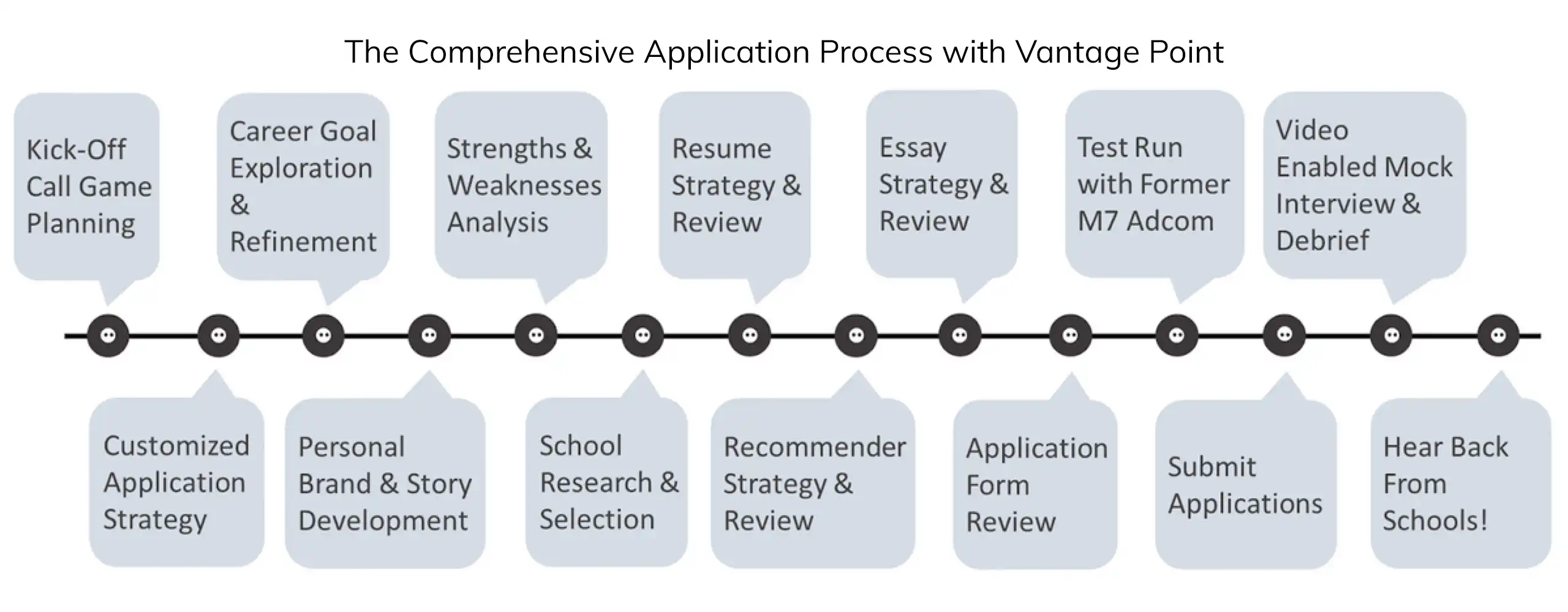Good things come to those who DON’T wait: 10 Dos and Don’ts for getting off the waitlist
So you’re on the waitlist for your dream school? It wasn’t the decision you were hoping for but the good news is that you’re still in the running. Being on the waitlist means that the adcom really liked you and thought you would be a great fit for their program but for any number of reasons, wasn’t able to extend you an offer of admission – yet. And the “yet” is what I’m writing about today. What can you do to get out of waitlist limbo? Inspired by our experience with our clients over the years, here’s a list 10 DOs and DON’Ts for actively managing your waitlist status. Hint: don’t justwait!
DO
1. Carefully read the waitlist instructions.
And follow them. This may seem like a given but I’m surprised how often this step is overlooked. The waitlist instructions provide a lot of useful information including what to do next – how to opt in to the waitlist (if needed), what kinds of updates the school accepts and how to submit them, contact information for your waitlist manager, etc. – and a variety of other FAQs. Note that this information can differ from school to school so if you’re on more than one waitlist, it’s still important to understand how the process is different at each school and what levers are at your disposal. Then you can start planning out your waitlist strategy.
2. Take an honest assessment of your application and identify any opportunities for improvement.
Chances are your time on the waitlist will span a number of months, which may give you room to address some of the weaknesses in your application. Maybe your GMAT score was a bit below average for that school, or maybe your quant score was on the low side (rule of thumb for the top programs is >70 percentile). If so, it could be worth considering re-taking the GMAT. Below average GPA? Consider enrolling in an online class (think statistics, accounting, finance, etc.) from an accredited institution to provide further evidence of your academic aptitude. On the younger side in terms of work experience? Now’s a great time to step up your leadership at work and provide further evidence of your professional maturity and impact. Ultimately, that weakness is different for each applicant so it’s important to take a critical eye to your application (and perhaps get a second opinion) and determine where and how you can improve.
3. Remain proactive.
I’ll say it again but the key to a successful waitlist strategy is action. By remaining active and including your waitlist manager in your updates, you’ll become a familiar face (or at least familiar name) that will be top of mind as the adcom continues to evaluate the waitlist. Most schools provide a number of options to submit updates and you want to take advantage of as many of them as you can. Once you’ve done 1. and 2. above, we suggest laying out a timeline of your updates, spaced 3-5 weeks apart that will take you through April or May. Here’s a list of several ways you can strengthen you profile while on the waitlist (not an exhaustive list but certainly a great place to start):
Submit update letters (can include a promotion at work, new GMAT score, information on a class you’re taking, new extra-curriculars, additional reasons for fit with a program, how you’ll contribute to the school, etc.) The key to these update letters is to provide new information, not to repeat material already included in your application. The only thing worth repeating is your love of and commitment to the school – and why.If you have any timing issues or deadlines that will impact your enrollment decision (i.e. the deposit is due on school X in March but you’re on the waitlist for school Y, which is your #1 choice), let the school know about that. Don’t demand a decision by that date but by letting them know your constraints, it could expedite a decision.
Submit a new letter of recommendation.Visit the school, sit in on a class, meet with admissions (even for only 10-15 minutes).Connect with your interviewer and ask for their advice on any next steps you can take. This is most relevant if your interviewer was an alum or current student of the school. (Use your judgement on this one in terms of how the interview went, how receptive you think your interviewer would be to providing further guidance, etc. In some cases, you might not feel comfortable reaching out to your interviewer and that’s OK.)
4. Think outside the box.
So far, we’ve explored the “tried and true” ways to actively manage your waitlist status. However, being on the waitlist is also a great opportunity to think outside the box and get a little creative (as long as it doesn’t go against the school’s waitlist instructions). Given what you’ve identified as opportunities to strengthen your application, think about the best way to convey that new information. For instance, more schools are accepting video letters now (i.e. Chicago Booth), so using that medium to provide meaningful updates while showcasing your personality and “putting a face to your name” could be a great option for you. Another idea is to have a current student or alum who knows you well submit a letter of support for you (detailing why you’re a good fit for their school). In general, if you have a unique skill or talent, don’t be shy about leveraging it to provide a memorable waitlist update – just make sure it’s appropriate.
5. Explicitly state that you’ll enroll if admitted.
The school will want reassurance that you will enroll if admitted off the waitlist. Remember that not everyone on the waitlist is as committed to the school as you are. So in everything you do, you want to let the school know that you remain committed to their program and that it’s your #1 choice (if that’s the case). No need to beat around the bush with this one – just got out and say it directly.
DON’T
1. Freak out, panic, or lose hope.
I know this one is easier said than done but now’s not the time to despair. It’s easy to feel powerless when tossed into waitlist limbo but your efforts (and emotions) are best spent on taking constructive action. Stay confident (if you’re on the waitlist, it means that you have what it takes) and try to not to compare yourself to others. Put your head down and focus on 1.-5. above. We’ve seen applicants get off the waitlist as late as July so it’s not over until you get an official rejection from the school.
2. Try to “hack” the waitlist process.
As admissions consultants, we get this a lot. “What are my chances of getting off the waitlist?” “What could I do that would automatically get me off the waitlist?” Unfortunately, as with all things MBA admissions, the waitlist process is not formulaic and there’s no formula to getting off the waitlist. Trying to predict your chances of getting off the waitlist may seem like a good way to get some level of certainty during the wait, but it’s really not productive or helpful. What’s done is done at that point, and again, your efforts will be best spent on taking actions to strengthen your profile and maximize your chances of admission.
3. Submit new essays with every update.As mentioned above, the purpose of an update letter is to provide new, relevant information that will strengthen your profile and help the adcom in their final admissions decision. The adcom receives a lot of communication and you don’t want to make their job any harder by submitting multi-page letters and/or information that was already included in your application. Your update letter(s) should be factual, direct, and succinct. Think of them more as a press release vs. an essay.
4. Harass the adcom or your waitlist manager.
I know we spent the entire first half of this guide outlining all the ways to be an active waitlist-ee but you also want to be thoughtful in every interaction and update you provide. In other words, you want to be proactive without being overly aggressive. Remember that the adcom may be evaluating your inter-personal skills and determining whether they feel comfortable with you representing the school in front of recruiters. The schools have a reputation to uphold, after all. So you want to make sure that your behavior is desirable.
5. Get complacent.
After all your hard work of strategizing on your applications, sprucing up your resume, writing countless essays, and everything else that goes into the application process, you may feel reluctant to load up your to-do list with more application “stuff”. After all, you were planning on having multiple acceptance letters in-hand by now, right? However, now’s not the time to get lazy or give up. Life is busy and you surely have other commitments taking up your time but a short-term investment in re-taking the GMAT (ugh!), visiting the school, crafting an update letter, etc. has the potential for long-term pay-off. So get going!
Melody Jones( Founder of Vantage Point MBA Admissions Consulting | Shaping Success Stories for Top MBA Program Applicants | Championing Women in Business ) After embarking on my own MBA journey, I founded Vantage Point MBA Admissions Consulting to help aspiring business school students get accepted to the top MBA programs in the U.S. and Europe. As President, I currently lead a team of over 25 superstar consultants to give our clients an unmatched experience, with a focus on white glove, personalized collaboration and mentorship.





